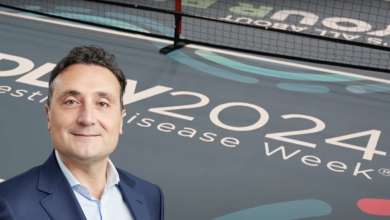7 Key Takeaways from Pharma Customer Engagement 2023

PharmaLeaders is a media partner with Reuters Events and proud to help promote Pharma Customer Engagement USA 2023.
While the setting was familiar along the Delaware River, many exciting new themes emerged at this year’s Pharma Customer Engagement event in Philadelphia. (#RECustomerUSA23)
As always, the Reuters team brought together a stellar group of speakers and panelists, and the topics covered a range of opportunities from the impact of AI and the rise of chatbots to how high quality data can transform omni-channel campaigns and drive higher engagement.
Here are seven key takeaways from the event for pharma leaders aiming to strengthen customer centricity and engagement:
- Adopt a Flexible, Nuanced Go-to-Market Model
Traditional go-to-market strategies no longer suffice with today’s challenges. In the post-pandemic marketing world, pharma companies need flexible, nuanced models that deliver high-value experiences tailored to different customer groups and local needs. This requires digital transformation, data-driven insights, and organizational agility to continually optimize engagement across markets and segments. As Catherine Owen from BMS eloquently described, “Omnichannel is great, but once someone shows up in a given channel, we need to be agile enough to provide the appropriate snackable content they are looking for.”
- Simplify and Collaborate to Meet Changing Expectations
Customers and patients now expect more transparency, personalization, and collaboration from pharma brands. Companies must simplify complicated information, work hand-in-hand with healthcare stakeholders, and make each interaction impactful. Brands that authentically meet these expectations will be embraced. Matt Titus from conversationHealth pointed out how typical websites can force people down multiple pages and clicks just to find one piece of information. In today’s environment, new approaches such as AI-driven chat tools are poised to reduce this bloated content approach and streamline the path from customer intent to high value answers.
- Transition to Customer-Focused Organizations
Becoming customer-centric requires fundamental changes in mindset, workflows, and skill sets. Pharma leaders must reimagine commercial roles, upskill teams, and implement processes to become laser-focused on customer value. Data and organizational alignment are key enablers. The result is higher satisfaction alongside business growth. Towards that end, Gaurav Kandhari from Novartis explained, the goal for data analytics is not to “connect the dots” – but instead – to focus on how to augment and strengthen the dots in order to deliver true customer value.
- Achieve True Personalization at Scale
Personalized omnichannel marketing is now essential but extremely difficult. Success requires the right blend of strategy, content, data, and technology. Companies must undergo transformation to activate data-driven insights and optimize engagements across touchpoints while maintaining privacy and compliance. Maria Whitman from ZS vividly portrayed this challenge by sharing a physician target who receives over 1600 messages a year from industry. In this type of saturated messaging environment, it is more important than ever for companies to clarify who is the “head chef” and ultimately owns the customer relationship.
- Embrace New Skills, Talents and Technology
Competing today requires new capabilities. Leaders must seek talent from non-traditional backgrounds and complement in-house teams with external experts. Martech stacks must expand to support data unification, automation, analytics, and omnichannel activation. Change is mandatory. Ryan Billings from Organon provided strong case studies for how partnerships can help companies efficiently navigate change and establish these critical new skills and talents across the organization.
- Unify Data for Customer Intelligence
Data unification in a customer data platform is the foundation for omnichannel marketing and personalization. Integrating data from CRM, EHRs, claims, and other sources provides complete customer intelligence to guide interactions. Privacy and quality controls are critical throughout. Jane Urban from Otsuka championed data teams staffed with both data storytellers and data analysts in order to gain a robust, data-driven customer view. She also pointed out the importance of formulating clear questions before going shopping for data. “Don’t go to the (data) grocery store hungry!”.
- Foster a Data-Driven Culture
Insights from customer data analytics must permeate the organization and inform decision making. Training, communication, and change management are key to getting teams onboard. With the right data infrastructure and cultural buy-in, analytics can transform pharma marketing and sales. In order to build this type of culture, HD Kim from Komodo Health emphasized that a diversity of data sources is essential for generating actionable analytics, and that every answer will generate more questions – so an iterative problem solving mindset is absolutely essential when it comes to data optimization.
Overall, the message from many great discussions and presentations throughout this year’s Pharma Customer Engagement event was clear: put the customer at the center, surround them with high quality data-driven experiences, and keep optimizing engagements as expectations evolve.
Companies that embrace this transformation – through strengthening their data sources, developing new skills, building partnerships and embracing new technologies will gain sustainable competitive advantage and customer loyalty well into the future.





